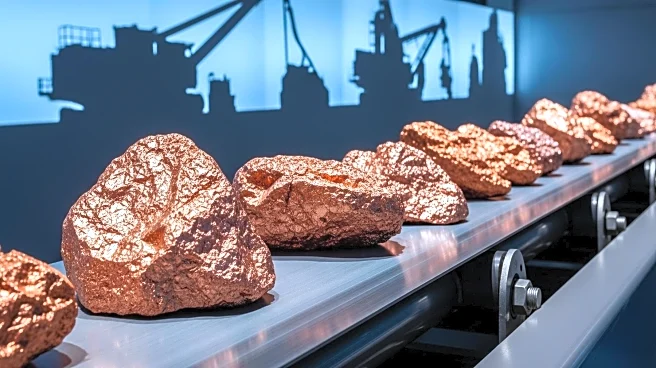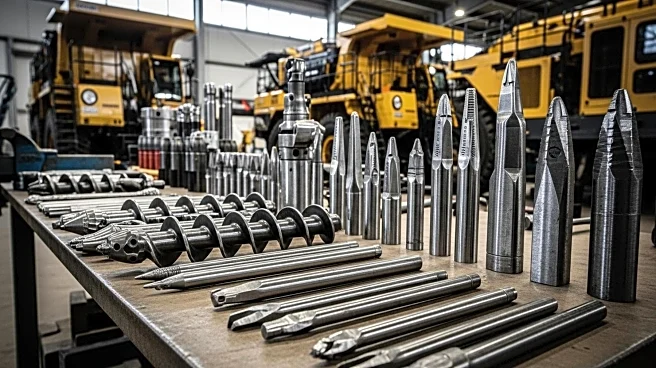What's Happening?
The copper mining industry is facing a pivotal decision in 2025 regarding operational models, with contract mining emerging as a cost-effective alternative to in-house operations. Recent studies indicate that contract mining can reduce operational costs by an average of 14% compared to in-house models. This is primarily due to the avoidance of large upfront equipment purchases and fixed labor costs. Contract mining involves outsourcing key activities such as drilling, blasting, and ore processing to specialized third-party contractors, allowing companies to convert fixed costs into variable, production-linked expenses. This model also provides access to the latest mining technologies and enables rapid scaling of operations in response to market demand. However, in-house mining offers direct control over operations, potentially better unit economics at scale, and the ability to customize practices to suit specific orebody characteristics.
Why It's Important?
The choice between contract and in-house mining models carries significant implications for the copper mining industry, which is crucial for the green energy transition and infrastructure development. Contract mining offers flexibility and cost savings, making it attractive for companies looking to optimize operations amid fluctuating copper prices. It allows companies to focus on core strategic initiatives and sustainability efforts while leveraging external expertise. However, it requires robust governance to ensure compliance with environmental and safety standards. In-house mining, while more costly, provides direct control over operations and strategic priorities, which can be advantageous for companies with large-scale operations and stringent environmental commitments. The decision impacts operational efficiency, sustainability, and profitability, influencing the industry's ability to meet global copper demand.
What's Next?
As the demand for copper continues to rise, mining companies are likely to explore hybrid models that combine the benefits of both contract and in-house mining. This approach allows companies to optimize for cost, control, and sustainability, adapting to market conditions and regulatory requirements. Companies may invest in technology and digital solutions to enhance operational efficiency and compliance. Stakeholders will need to continuously evaluate their operational models, enforce ESG standards, and manage contractor risks to maintain competitiveness. The industry will also focus on aligning operations with sustainability goals, leveraging technology to monitor and report compliance effectively.
Beyond the Headlines
The shift towards contract mining reflects broader trends in the mining industry, including increased scrutiny on sustainability and environmental impact. As companies outsource operations, they must ensure that contractors adhere to strict environmental and safety standards. This requires advanced monitoring and governance frameworks, potentially involving technologies like blockchain for traceability and satellite data for real-time compliance checks. The decision also highlights the importance of strategic capital allocation and workforce management in achieving operational efficiency and sustainability. As regulatory pressures increase, companies will need to balance cost savings with ethical and environmental responsibilities.











